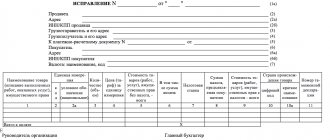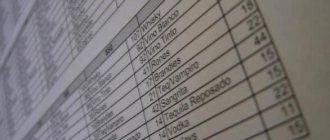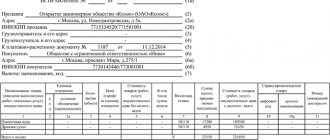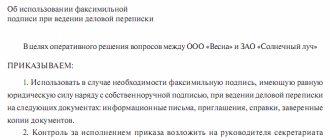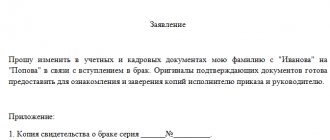double entry method is a special technique that is widely used for proper accounting. It allows you to accurately and fully reflect information about events affecting the economy of the organization and occurring in its daily activities. Let's look at this technique, why it is needed and how to use it.
Double entry: its essence and meaning
Accounting accounts reflect important developments in the economic activities of the enterprise. At the same time, simply characterizing a specific case, it is difficult to trace the sources of financing: in some situations, the asset increases in proportion to the liability, and in others, funds completely flow from one item to another. in accounting allows you to fully characterize the operations being performed .
EXAMPLE
When an enterprise makes payments to suppliers or contractors, they record not only a decrease in funds in the current account, but also an increase in the amount of inventory. When purchasing new materials, changes are made simultaneously to the “Materials” account and the account of the source of financing for this transaction.
Thus, double entry ensures the relationship between the accounts. The results of correct management are as follows:
- creation of a unified accounting system;
- control over the use of available resources and sources of financing;
- correct reporting.
This methodological technique is then used in the preparation and analysis of documentation about various objects. Therefore, double entry is of great importance.
The essence of double entry in accounting is that all transactions are reflected simultaneously in the debit and credit of accounts. Thus, the ability to immediately see the paths of inflow and outflow of funds provides many advantages to specialists seeking to improve the economic condition of the company.
Information for double entry is entered on the basis of primary documents confirming the actions performed.
Also see: The Most Common Accounting Irregularities.
Double entry as an element of accounting method
This methodological technique gives systematicity, consistency and organization to the procedures performed. It provides detailed information about the company's assets and liabilities, which allows you to:
- analyze the economic state of the actions taken;
- control their legality.
The principle of double entry of business transactions allows you to describe actions that affect the balance sheet. The peculiarity is that a deviation in one part cannot distort the final amount. And in the case of simultaneous changes in values, the amount increases or decreases proportionally.
As a result, the debit turnover will be equal to the credit turnover. Consequently, double entry is a way of recording business processes, helping to accurately keep records and make truthful reports.
Correct preparation of entries is based on understanding the economic content of the change taking place and the reasons for its formation. Therefore, you need to be clearly guided by the meaning of credit and debit.
Each account is assigned a specific number in accordance with the chart of accounts.
It is very important that double entry is a reflection of a transaction , requiring the correct selection of corresponding accounts in accordance with its content. Therefore, an accountant must be able to accurately determine their type:
- active;
- passive;
- active-passive.
Correct use of double is the basis of well-written reporting.
Also see “Who is responsible for organizing and maintaining accounting.”
The semantic connection between several accounts that characterize a specific operation and are used by the double entry method is called correspondence of accounts. It talks about the relationship between the recorded objects of the enterprise.
Next, let's look at specific examples of what double entry is in accounting .
Accounting accounts
Accounting accounts are a system of grouping and current accounting of homogeneous funds according to certain criteria. The movement of accounting for each object occurs both in the direction of increase and decrease. The account is a table, the left side is Debit, the right side is Credit (from the Latin debet - must, credit - believes). Each account is given a code and name. The sum of the total of all debit transactions is called debit turnover , or debit turnover. The sum of all loan entries is called credit turnover , or loan turnover. The balance in the account is called the balance. The presence of an account balance means the presence of an accounting object at a certain point in time. The balance can be beginning or ending. The amount of the opening balance is equal to the corresponding balance sheet item at the beginning of the period. The final balance is formed by counting, and the corresponding total is transferred to the balance sheet at the end of the reporting period.
Too lazy to read?
Ask a question to the experts and get an answer within 15 minutes!
Ask a Question
Accounts are divided depending on indicators about funds or sources of their formation, and can be active or passive.
Double entry in accounting. Examples
Let's be honest: double entry is a way of reflecting business transactions , better than which no one has yet come up with anything.
When searching for account correspondence and posting data among accounting registers, we recommend using the experience of colleagues and the methodological recommendations of the Ministry of Finance, which present situations and posting options for various business situations. This will help not only prevent many errors, but also understand the elements of the accounting system.
Let's look at examples to better understand double entry and its meaning .
EXAMPLE 1 transferred 100 thousand rubles from the current account to the cash desk in order to issue salaries and make settlements with accountable persons. The actions performed will be reflected in the accounts:
- 50 "Cashier";
- 51 "Current accounts".
The wiring itself looks like this:
Dt 50 – Kt 51 (100 thousand rubles).
As you can see, the structure of assets remained the same, but only their value changed - this is evidenced by the double entry of the business transaction of the LLC.
Next, the following postings should follow to Globus LLC (see table).
| Dt | CT | Content | Amount, rub. |
| 20 | 70 | Staff salaries accrued | 100 000 |
| 50 | 51 | Received money in the cash register for wages | 100 000 |
| 70 | 50 | Cash issued from the cash register | 87 000 |
| 68 | 70 | Income tax collected | 13 000 |
Also see “How to Maintain Accounting for an LLC.”
Let's consider how double entry provides a mutual connection between the property of an enterprise and the source of its formation.
EXAMPLE 2
The following founders contributed funds to the authorized capital:
- N.I. Kuravleva - 340 thousand rubles;
- K.V. Chizhikov – 560 thousand rubles;
- E.K. Orlova - 218,600 rubles;
- T.I. Tribunsky - 431 thousand rubles.
This business transaction is shown by posting:
Dt 50 – Kt 75.1 (1,549.6 thousand rubles).
As a result, the double bind provides a link between the organization's assets and the reasons for their change. In this case, it is financing from the founders. Since account 75 is active-passive, its increase in this situation indicates a decrease in accounts receivable.
example of double entry shows how the acquisition of inventory items is reflected .
EXAMPLE 3
The merchant purchased goods for sale. The information is presented in the table.
| product name | Number of packages | price, rub. | Total, rub. |
| Cookies "Slastena" | 136 | 30 | 4080 |
| Roll "Night Cherry" | 228 | 27 | 6156 |
| Mineral water "Sibirskaya" | 94 | 25 | 2350 |
| Apple, cherry, apricot juice | 51 | 138 | 7038 |
| Candies "Classics" | 95 | 430 | 40850 |
| RESULT: | 60 474 | ||
The transaction performed is reflected by a posting that shows an increase in assets and, at the same time, accounts payable:
- 41 "Products";
- 60 “Settlements with suppliers and contractors.”
Dt 41 – Kt 60 (RUB 60,474).
As can be seen from the examples, double entry is a method of accounting. Its application in practice helps to understand all the nuances of operations, identify errors and additional costs. The result is efficient allocation of funds and increased profitability of the enterprise.
Also see “Accounting on the simplified tax system”.
Read also
17.05.2018
Passive accounts
In passive accounts, records are kept of the sources of formation of the enterprise's property (liabilities). Opened on the basis of liability items on the balance sheet. The balance is always reflected in the credit. A debit balance will indicate an error. An increase in the passive account for a loan, a decrease in sources of funds for a debit. The account formula is written as: $Balance_{final \ (by \loan)}=Balance_{beginning \(by \loan)}+Turnover_{(by \loan)}-turnover_{(by \debit)}$.
Too lazy to read?
Ask a question to the experts and get an answer within 15 minutes!
Ask a Question
Double entry, accounts and charts of accounts
Watch the lecture on: INTUIT | youtube.com
If you have problems with the video, please click above youtube link
The presentation for this lecture can be downloaded here.
Purpose of the lesson:
reveal the functioning of the main accounting mechanisms.
Double entry and ledger accounts
From the example given in the previous lesson, you may have noticed that each change in the balance necessarily affects two of its columns. Moreover, if changes concern columns located in one part of the balance sheet (in assets or liabilities), funds seem to “flow” between them without affecting the balance sheet currency
. For example, the purchase of materials using money stored in a current account leads to a change within the balance sheet asset, but does not affect the balance sheet currency. Please also note that with such changes, one balance sheet item increases, while the other decreases.
If changes affect both assets and liabilities - for example, the receipt and repayment of a loan, the receipt of profit - the balance sheet columns located in different parts of it change, and they change in one direction. As a result, the balance sheet currency increases or decreases
. If an asset increases, the liability also increases; if an asset decreases, the liability also decreases. If you followed the example above closely, these balance changes will seem quite understandable. Indeed, if the amount of money in an organization increases, this money must come from somewhere - therefore, if an asset (property) grows, the liability (the source of property formation) will also increase.
“Double” changes in the balance sheet are a consequence of one of the main elements of the accounting system - the double entry method
.
The essence of the double entry method is that business transactions are recorded twice in accounting. Once - for the debit of one or more accounts, another time - for the credit, and the amounts of debit and credit turnover are always equal to each other. [2].
The use of the double entry method is regulated by the already known Federal Law “On Accounting” dated December 6, 2011 No. 402-FZ. Let us remember clause 3 of Art. 10. Law:
Accounting is carried out through double entry in the accounting accounts, unless otherwise established by federal standards.
Let's consider the "Current Account" account, which reflected cash flow transactions in the previous example.
Let us remember: first, funds were received into the current account as a contribution from the owner of the organization in the amount of 10,000 rubles. Next, we purchased materials for 2,000 rubles, then a loan of 120,000 rubles was credited to the account, we purchased a computer and office equipment for 70,000 rubles, credited the proceeds from the sale of part of the materials to the account - 2,000 rubles, and finally, repaid part of the debt from the account loan in the amount of 40,000. The accounting account can be presented in the form of a plate with the following content (Table 2.1). Table 2.1. Checking account
| Account name | Checking account |
| Balance at the beginning of period | 0 |
| Received during the period | |
| Owner's contribution | 10000 |
| Credit | 120000 |
| Revenue from sales of goods | 2000 |
| Dropped out during the period | |
| Purchasing materials | 2000 |
| Purchase of equipment | 70000 |
| Repayment of part of the loan | 40000 |
| Balance at the end of the period | 20000 |
As you can see, here we have listed the transactions on the account and calculated the account balance by adding up all the inflows into the account and subtracting from them the amount of all outflows from the account. This is a completely logical operation - if you try, for example, to record your personal income and expenses, you will end up with approximately the same table. If the account balance at the beginning of the period were not equal to zero (that is, there would be some money in the current account) - when calculating the balance at the end of the period, we would simply subtract the amount of withdrawals from the account from a number equal to the sum of the initial balance and the amount receipts.
Such a table is already very close to the concept of an account that is used in accounting. However, it is not intended for double entry. And, as already mentioned, double entry is one of the foundations of modern accounting.
Accounting accounts consist of two parts - debit
(usually abbreviated as D or Dt.) and
credit
(respectively, K, or Kt.).
Let's look at the appearance of the "Current Account" account after we divide it into two parts - debit and credit (Table 2.2). Table 2.2. Account 51, “Current accounts”
| 51 “Current accounts” | |
| D | TO |
| Initial balance: 0 | |
| Income: | Disposals: |
| 10000 | 2000 |
| 120000 | 70000 |
| 2000 | 40000 |
| Total receipts (debit turnover): | Total disposals (credit turnover): |
| 132000 | 112000 |
| Final balance: | |
| 20000 | |
Balance
is the account balance.
Initial balance
is the initial balance (usually at the beginning of the current month),
ending balance
is the final balance at the end of the current month.
In the title of the plate representing the account (in accounting jargon such plates are called “airplanes”) we have given the account number and its name
.
Please note that the account is not called “Current Account”, but rather “ Current Accounts
”. The fact is that this account includes information about all current accounts (and there may be several) that the organization has.
This is exactly the number and name this accounting account has in a regulatory document issued by the Ministry of Finance of the Russian Federation, which is called Order No. 94n dated October 31, 2000 (as amended on November 8, 2010) “On approval of the chart of accounts for accounting financial and economic activities organizations and instructions for its use." Below we will look at the Chart of Accounts in more detail.
Now let's “draw” another account (Table 2.3) - namely, the one that is used to account for short-term loans and borrowings.
Let us recall that the organization received a loan in the amount of 120,000 rubles, after which it repaid part of the loan in the amount of 40,000 rubles. Table 2.3. Account 66, “Settlements for short-term loans and borrowings”
| 66 “Settlements for short-term loans and borrowings” | |
| D | TO |
| Initial balance: 0 | |
| Disposals: | Income: |
| 40000 | 120000 |
| Total disposals (debit turnover): | Total receipts (credit turnover): |
| 40000 | 120000 |
| Final balance: | |
| 80000 | |
Please note that this account has a credit opening balance
,
receipts
to the account are reflected
on credit
,
disposals - on debit
, and
the balance
(final balance) of this account is also
located on the credit
of the account.
What's the matter? After all, the previous account was replenished by debit, decreased by credit, had a debit opening balance and a debit ending balance. Is there a mistake here? No, there is no mistake here - everything is correct. We have just looked at two different accounts in relation to the balance. Account 51 “Current accounts”
is reflected in
the balance sheet asset
, which means that
receipts
to it are recorded
as a debit
,
disposals
are recorded
as a credit
, and this account
either has no balance
or
has a debit balance
, which means
the balance of funds in the account
.
Account 51 is called active account
.
Let's imagine that we received, for example, at the end of the month, a credit balance on this account. Suppose the initial account balance was zero, after which 10,000 rubles were credited to the account, and 15,000 rubles were spent from it. This is absurd - it’s like if a person, leaving home, put 10,000 rubles in an empty wallet, and then spent 15,000 rubles from there. The same is true for any active account - for example, a materials account. We cannot sell more of the same paper than was previously purchased.
And account 66 “Settlements for short-term loans and borrowings”
- This is an account that is reflected
in the liability side of the balance sheet
.
This is a passive account
.
It has a credit balance
(or does not have it at all, although account 66 may have a debit balance - as a sign of an overpayment on the loan),
an increase
in this account occurs
by credit
,
and a decrease by debit
.
There are also so-called active-passive accounts
- they may have
an expanded balance
.
This is, for example, the account for accounting of settlements with buyers and customers - 62 “Settlements with buyers and customers”
.
The fact is that, for example, if we shipped goods to a buyer, but did not receive payment from him, his debt will be recorded as a debit to such an account. But another buyer can make us an advance payment, which will be taken into account as a credit to account 62. If we do not put things in order with these buyers, it will turn out that we owe goods to one of them, and the other must pay us for goods that we have already shipped to him. We cannot offset the debt of one buyer against the prepayment of another (in fact, this is possible, but only in special cases), so we are forced to form a detailed balance on account 62. The debit balance
means
the buyers' debts to us
, and
the credit balance means our debt to the buyer
.
We will talk about settlements with buyers and customers below, and we will also discuss the intricacies of this process there. For now, it’s enough for you to know that, in addition to active
and
passive accounts
, there are also
active-passive ones
.
Above, we talked about the principle of double entry - all business transactions are recorded on two accounts - on one - as a debit, on the other - as a credit.
Let's try to create an accounting entry that would reflect the receipt of funds into the current account after receiving a short-term loan. In common parlance, accounting records are called postings (from the word to conduct). The wiring includes the following required parts. Firstly - correspondence of accounts indicating debit and credit, secondly - the amount of the transaction. Our accounting entry will look like this:
- Debit 51 “Current accounts”
- Credit 66 “Settlements for short-term loans and borrowings”
- Amount: 120,000 rub.
This entry is quite long and not very easy to read, so it is usually written shorter:
D51 K66 120,000 rub.
This entry reads like this: “The current account received funds in the amount of 120,000 rubles, taken on a short-term loan.”
